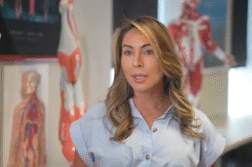ORLANDO, FLA. (Ivanhoe Newswire) — April is National Distracted Driving Awareness Month. Whether you’re using your cellphone, eating or talking to a passenger, distracted driving now kills more people than drunk driving. Last year, more than a million accidents were caused by distracted drivers. More than 31 hundred people died from someone not paying attention to the road. According to the national highway transportation and safety administration, 280 thousand people were injured. It’s time to take a hard look at what you’re looking at while you’re behind the wheel.
The photos are frightening … the headlines horrifying … the reality even worse! Nine people a day are killed by distracted drivers.
The national highway traffic safety administration says one in four car crashes are estimated to involve cell phone use.
According to the NHTSA, sending or reading a text can take your eyes off the road for up to five seconds — the equivalent of driving the entire length of a football field at 55 miles per hour with your eyes shut.
Studies have found that your reaction time will be 30 percent worse if you’re trying to text and drive. Authorities agree. The best way to avoid doing it is to keep your phone on silent while driving or give it to your passenger. Also, put your phone where you can’t see it. Install the app LifeSaver. It keeps track of how often you check your phone while driving. You can allow it to lock your phone while driving. It can also give parents the ability to lock their teens phone while driving.
No state outright bans cellphone usage, but 24 states prohibit handheld cellphone use of any kind while driving. And remember this … 57 percent of people are more likely to stop driving distracted if a friend or passenger pressures them to. That means half of the people are just waiting to be told to stop. So, speak up! You could be the one to prevent the next distracted driving accident.
Sources:
https://www.nhtsa.gov/risky-driving/distracted-driving
Contributor(s) to this news report include: Marsha Lewis, Producer; Bob Walko, Videographer and Editor.
To receive a free weekly email on Smart Living from Ivanhoe, sign up at: http://www.ivanhoe.com/ftk



